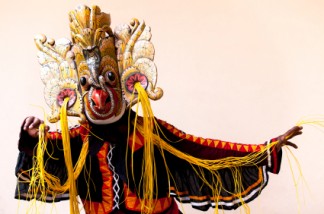
Journey through ancient Sri Lanka visitng the UNESCO World Heritage sites of Dambulla, Polonnaruwa, Anuradhapura, Sigirya and finally the hill town and capital, Kandy. During the Esala Festival, Kandy’s streets are alive with fire-dancers, masked-dancers and elephants adorned with lavish garments. Esala signifies the victories of the Hindu God Indra over the demon Vritra, who prevented the burst of rain clouds. At the beginning Esala was a ritual to invoke the blessings of the Gods to cause rainfall during the dry season. Later, the Sinhala Kings added the precious tooth relic. Esala Festival is a chance for you to be a part of this island’s tradition today.
Day 1 – Negombo
Arrive in Sri Lanka where you will be met and driven to your hotel in Negombo. After you check in to your hotel, explore the town and its beach.
Day 2 – Negombo/Dambulla
After breakfast drive to the island’s Cultural Triangle to begin exploring ancient Sri Lanka. Learn about Dambulla and its religious heritage by visiting its Five Cave Temple complex also known as the Golden Temple of Dambulla which is a UNESCO Heritage Site as are the other places of interest in this area. The caves are painted with pictures depicting the life of Lord Buddha. There are said to be more than 180 caves in the nearby area..
Day 3 – Dambulla/Polonnaruwa
Leisurely morning in Dambulla before driving onward to Polonnaruwa, our second stop in ancient Sri Lanka.
Day 4 – Polonnaruwa
Full day of exploring the ancient ruins of Polonnaruwa. Polonnaruwa was the second capital of Sri Lanka after the destruction of Anuradhapura in 993. Besides the Brahmanic monuments built by the Cholas, the monumental ruins of the fabulous garden-city created by Parakramabahu I in the 12th century is located here.
Day 5 – Polonaruwa/Anuradhapura
After breakfast we drive to the ancient town of Anuradhapura. Your afternoon is at leisure after checking in to your hotel.
Day 6 – Anuradhapura
Full day for exploring ancient Anuradhapura. From the 4th century BC until the beginning of the 11th century AD Anuradhapura was the capital of Sri Lanka. During this period it remained one of the most stable and durable centers of political power and urban life in South Asia. This ancient city, considered sacred to the Buddhist world, is today surrounded by monasteries covering an area of over sixteen square miles
Day 7 – Anuradhapura/Sigirya
Drive onward to Sigirya, renowned for its ancient paintings (frescos) remincscent of the Ajanta Caves, India. Sigiriya is thought to have been inhabited through prehistoric times. A cave complex was built by King Kashyapa in 477 -495 AD but after his death was used as a rock-shelter mountain monastery with caves prepared and donated by Buddhist devotees until the 14th century.
Day 8 – Sigirya/Kandy/Esala Festival
Today we arrive in Kandy where the Esala (Festival of the Tooth Relic) is well underway. It is the 8th day of the festival and vibrant dancers, musicians and costumed elephants create a colorful, unforgettable experience. Watch the procession and festivities.
Day 9 – Kandy/Esala
More processions and festivities. The Esala Perahera is a fusion of two distinct but interconnected processions or “Peraheras” – The Esala and Dalada. The Esala Perahera dates back to the 3rd century BC and was a ritual enacted to request the gods for rainfall. The Dalada Perahera is believed to have begun when the Sacred Tooth Relic of the Buddha was brought to Sri Lanka from India during the 4th Century AD. The TOOTH RELIC was taken in procession to Sri Lanka by Princess Hemamala & Prince Dantha. (The first 5 nights are the Kumbal Perahera and the latter 5 nights the Randoli Perahera.)
Day 10 – Kandy/Esala
After five nights of the Randoli Perahera, the pageant ends with the Diya Kepeema, which is the water cutting ceremony at the Mahaweli River at Getambe, a town a few miles from Kandy. The day’s Perahera is held to mark the ceremony. This is the end of Esala.
Day 11 – Kandy/Hapatule
After breakfast, drive south to the hilly town of Hapatule. Visit a tea plantation and learn about one of Sri Lanka’s biggest exports.
Day 12 – Hapatule/Weligama
Today head for the coast to the quaint town of Weligama. After hotel check in, the day is free for you to enjoy the beach.
Day 13 – Weligama
Weligama has a variety of watersports for you to enjoy. Besides swimming try bodysurfing, snorkeling, kayaking or parasailing. This is a beach day! Here you can see the famous stilt fisherman. Weligama is also known for an off shore islet known as Taprobane, where a dream house of French Count de Mauny was built. Today it is owned today by Geoffrey Dobbs, an Englishman who was an entrepreneur in Hong Kong.
Day 14 – Weligama/Colombo
Enjoy your morning beaching before driving to Colombo. Settle in your hotel before a brief tour around Colombo which includes its harbor, fort district and Cinnamon Gardens.
Day 15 – Depart Colombo
Transfer to the airport for your departure







